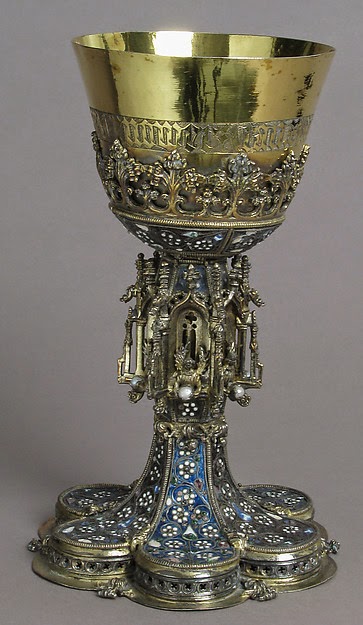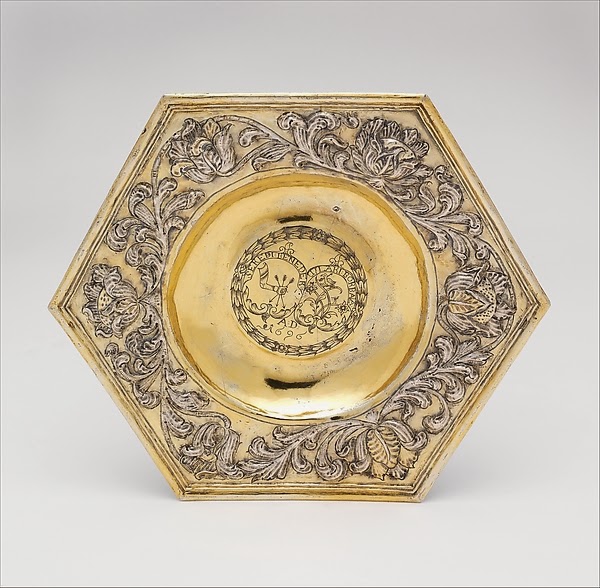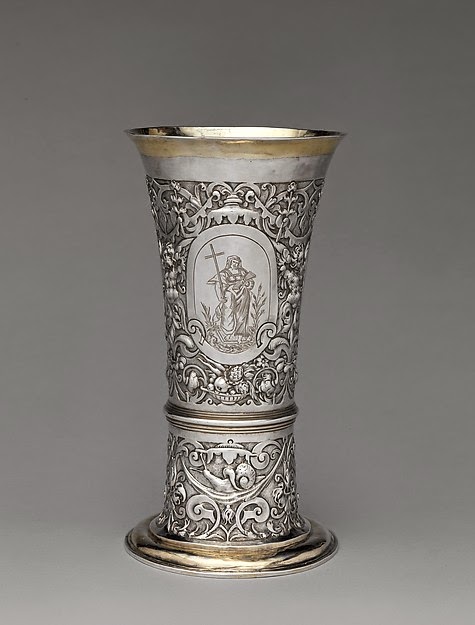Medieval History
- Hungarian Silver From Heller Collection On View In Mak Frankfurt
Lidded jug, 1605. Nagyszeben (Hermannstadt / Sibiu) © Museum für Angewandte Kunst Frankfurt Since earlier this year, the gold and silver collection of István Heller has been on view at the Museum für Angewandte Kunst in Frankfurt. István...
- Hungarian Silver On Sale In Nyc
Nautilus cup Nagyszeben, mid-17th century About 30 precious silver and goldsmith works from Hungary and Transylvania will be auctioned off at Christie's New York tomorrow (17 May 2011). (Sale 2447: Important English, Continental and American...
- Detail Views Of Salgó Chalices At The Metropolitan
The Metropolitan Museum has just made available a number of detail photographs of the two medieval chalices which had recently entered the museum from the Salgó collection. Both chalices date from the mid-15th century, and are decorated with a special...
- Hungarian Goldsmith Objects Enter The Metropolitan Museum, Part Ii.
I could not resist - I have to include here a few other superb objects from the Salgó collection. All these have been published before in the catalog of the collection, and now appear in the Collection database of the Metropolitan Museum, as outlined...
- Medieval Holdings Of Budapest Museums
I often find myself trying to explain the system of Budapest's major art museums to foreigners. Although it is a clear system, it can still be confusing at times. For example, you can find important medieval artworks in all major museums of the capital....
Medieval History
Hungarian Treasure on view at the Metropolitan Museum
 |
| Chalice, 1462, Inv. 2010.109.6 |
As reported earlier on this blog, The Metropolitan Museum of Art has recently purchased the best objects from the collection of the late Nicholas M. Salgo. The collection includes two late medieval chalices, likely made in Hungary, as well as a large amount of goldsmith works from the 16-18th centuries, and originating from Hungary as well as from the Principality of Transylvania. From April 6th until late October 2015, the collection is on view in the decorative arts galleries of the Metropolitan Museum (just in front of the Robert Lehman Wing).
This is the information from the website of the Museum:
"Nicolas M. Salgo (1914?2005), a Hungarian native and former United States ambassador to Budapest, was fascinated by the art of the goldsmith in Hungarian culture and formed his own "treasury" by collecting pieces that are individual and unique. This exhibition will celebrate the gift to the Metropolitan Museum of the major part of the silver collection assembled by this focused collector over three decades.
This large collection of silver?about 120 pieces, most dating from the fifteenth to the late eighteenth century?comprises a variety of types with especially refined appearance and high levels of craftsmanship, representing Hungarian silver at its best. The earliest works in the Salgo Collection are two rare medieval chalices ornamented with colorful filigree enamel. The intriguing shapes, inventive decoration, and historical importance of the objects?products of once-prosperous local aristocratic dynasties?make this ensemble exceptional. As a result of this generous gift, the Metropolitan Museum is now the only museum outside Hungary to possess such an array of sumptuous goldsmiths' work from the region."
The collection database of the Metropolitan Museum includes more detailed information on all the objects, as well as a large selection of photographs. You can get to this material via these links: link1 and link2.
 |
| Hexagonal dish, 1696, Inv. 2010.110.42 |
Let me end this post with a personal note. My family on my father's side originates from the town of Brassó in Transylvania (known as Kronstadt in German, now Brasov in Romania). It is recorded that some of my ancestors were goldsmiths - as commemorated for example in a poem by my great-grandfather, Lajos Áprily (Jékely) (you can read it here in Hungarian). Well, the Salgó collection includes a very nice beaker from the early 17th century, made by Jeremias Jekel, goldsmith in Brassó, who died in 1676 - and was thus maybe a distant ancestor of my family.
 |
| Beaker, c. 1600, Inv. 2010.110.32 |
- Hungarian Silver From Heller Collection On View In Mak Frankfurt
Lidded jug, 1605. Nagyszeben (Hermannstadt / Sibiu) © Museum für Angewandte Kunst Frankfurt Since earlier this year, the gold and silver collection of István Heller has been on view at the Museum für Angewandte Kunst in Frankfurt. István...
- Hungarian Silver On Sale In Nyc
Nautilus cup Nagyszeben, mid-17th century About 30 precious silver and goldsmith works from Hungary and Transylvania will be auctioned off at Christie's New York tomorrow (17 May 2011). (Sale 2447: Important English, Continental and American...
- Detail Views Of Salgó Chalices At The Metropolitan
The Metropolitan Museum has just made available a number of detail photographs of the two medieval chalices which had recently entered the museum from the Salgó collection. Both chalices date from the mid-15th century, and are decorated with a special...
- Hungarian Goldsmith Objects Enter The Metropolitan Museum, Part Ii.
I could not resist - I have to include here a few other superb objects from the Salgó collection. All these have been published before in the catalog of the collection, and now appear in the Collection database of the Metropolitan Museum, as outlined...
- Medieval Holdings Of Budapest Museums
I often find myself trying to explain the system of Budapest's major art museums to foreigners. Although it is a clear system, it can still be confusing at times. For example, you can find important medieval artworks in all major museums of the capital....
